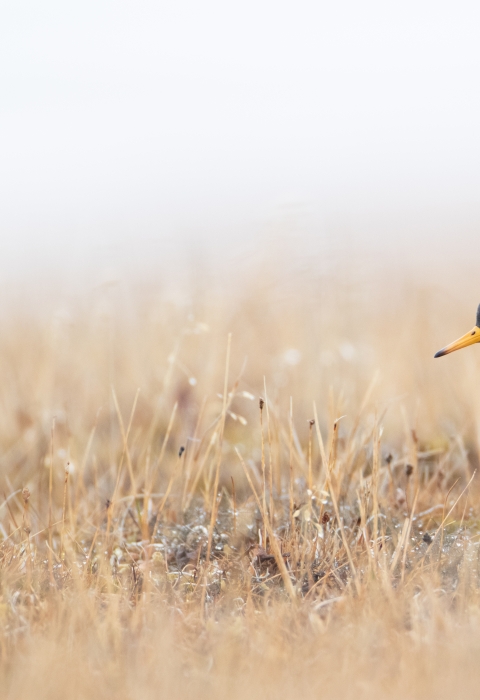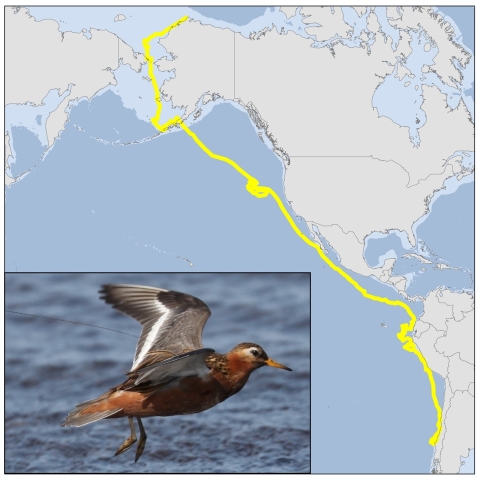Each year, billions of birds make the perilous journey between discrete breeding and wintering grounds that are often thousands of kilometers apart. The success of this journey depends on an individual’s ability to find areas to rest and refuel in a myriad of inhospitable environments. Identifying these rest and refuel areas (i.e., stopover sites), especially those used by many individuals, is important for assessing threats during migration, identifying areas for conservation, and determining a species’ vulnerability to changing environmental conditions. However, for some species, such as the Red Phalarope, little is known about its migration patterns. This is because the Red Phalarope, although technically classified as a shorebird, functionally acts like a seabird during the nonbreeding season (early August to late May each year), staying far from the coast during most of the year. This makes tracking Red Phalaropes quite difficult once they leave the tundra habitat on their Arctic-breeding grounds. Recent evidence suggests that populations of Red Phalaropes, like those of many other shorebirds, are declining, likely due to threats during the nonbreeding season. Therefore, the first step in understanding why populations are declining is to determine where Red Phalaropes migrate and the threats they face along the way.
To document migration routes and stopover sites, 72 transmitters were attached to Red Phalaropes breeding at 7 tundra sites in Arctic Alaska and Canada between 2017 and 2020. These small 2-gram tags, which send GPS locations to satellites overhead, allowed us to document Red Phalarope movements through the Arctic Ocean, Bering Sea, and the Pacific Ocean to reach wintering sites off the coast of Chile (see below). While on this journey, individuals took very indirect, circuitous routes that greatly increased both the duration and distance of their southward migration, with one individual traveling over 24,000 km from Alaska to Chile (approximately 9,000 km farther than a straight-line flight). We also found that individuals used a fly and forage migration strategy, frequently stopping where food was plentiful. By combining data across individuals, important stopover sites were identified that will be useful for conservation of the species. However, numerous anthropogenic threats, such as warming waters, declining food, plastic pollution, boat traffic, and contaminants encountered by Red Phalaropes at sea will also need to be addressed.
Information from this study was published in Marine Ecology Progress Series and highlighted as their feature article https://www.int-res.com/abstracts/meps/v729/feature/.
To learn more about these amazing migrants, our projects, and how you can help, visit the Alaska Shorebird webpage






